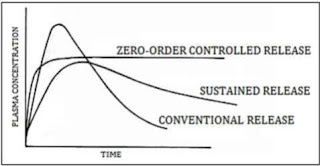Bio Reactors
The heterogenization of enzymes, which involves immobilizing them onto solid supports or within matrices, is a crucial technique in biocatalysis. This process allows for the enzymes to be reused and can enhance their stability and activity. Here’s a summary of the types of reactors used for immobilized enzymes:
Batch Reactors with Complete Backmixing (a):
- Operate in cycles, adding substrate and removing product intermittently.
- Provide uniform conditions throughout the reactor.
Stirred-Tank Reactor (b):
- A type of batch reactor that uses a mechanical agitator to mix the reactor contents.
- Ensures uniformity and can handle reactions with high viscosity.
Fixed-Bed Reactor ©:
- Contains immobilized enzymes on a solid support through which the substrate flows.
- Suitable for continuous processes and can operate without agitation.
Fluidized-Bed Reactor (d–f):
- The solid catalyst particles are suspended by the upward flow of the substrate.
- Offers excellent mass transfer and heat distribution.
Continuously Operated Reactors with Plug-Flow Behavior (g–h):
- Substrate moves through the reactor without backmixing, resembling a ‘plug’.
- Ideal for reactions with a high degree of conversion.
Reactor with Immobilized Enzyme in/on a Membrane (I):
- Separates two phases, such as water and organic solvent, while containing the immobilized enzyme.
- Can prevent enzyme denaturation by separating it from harmful solvents.
Reactor with Physically Separated Enzyme and Organic Solvent (j):
- Protects the enzyme from denaturation by keeping it away from the organic phase.
The design of these reactors takes into account the kinetic properties of the reaction system, such as substrate inhibition or product inhibition, to optimize productivity and stability. Additionally, the construction materials for these reactors must not release heavy metals that could inhibit enzyme activity. Sterilization methods like chemical agents, steam, or ultraviolet rays are employed to prevent microbial contamination.
For industrial processes, maintaining a constant conversion rate is essential for product quality and reproducibility. Overcoming enzyme deactivation due to denaturation is achieved by adjusting residence time or replenishing the enzyme.
Recycle Packed Column Reactor:
- Allows operation at high fluid velocities and can handle high-viscosity substrates.
Fluidized Bed Reactor:
- Suitable for reactions with gaseous substrates or products, but requires care to prevent damage to the immobilized enzymes.
In summary, the choice of reactor design is based on the specific requirements of the biocatalytic process, considering factors like enzyme stability, reaction kinetics, and the need for sterility.



Comments
Post a Comment
Thanks